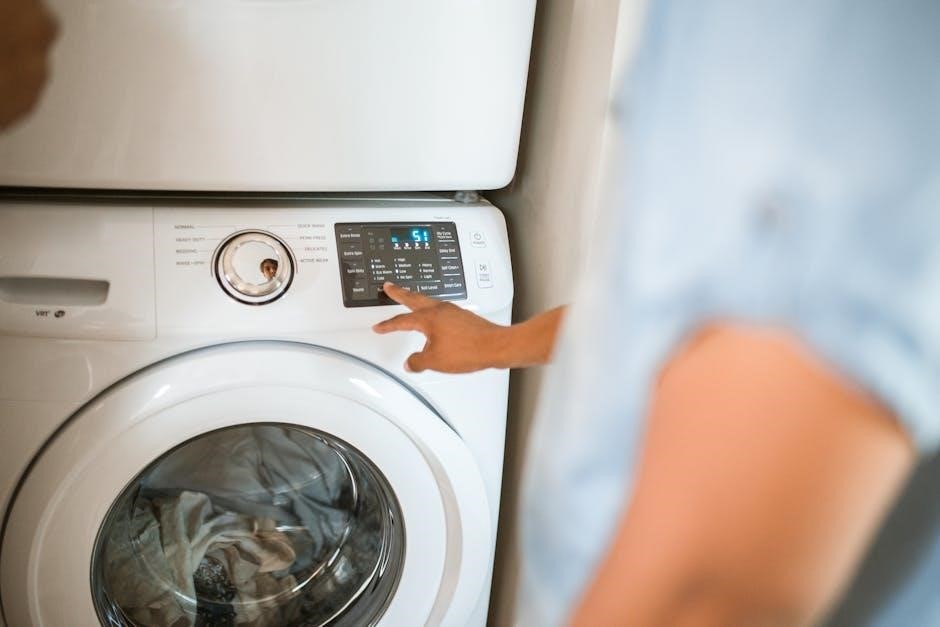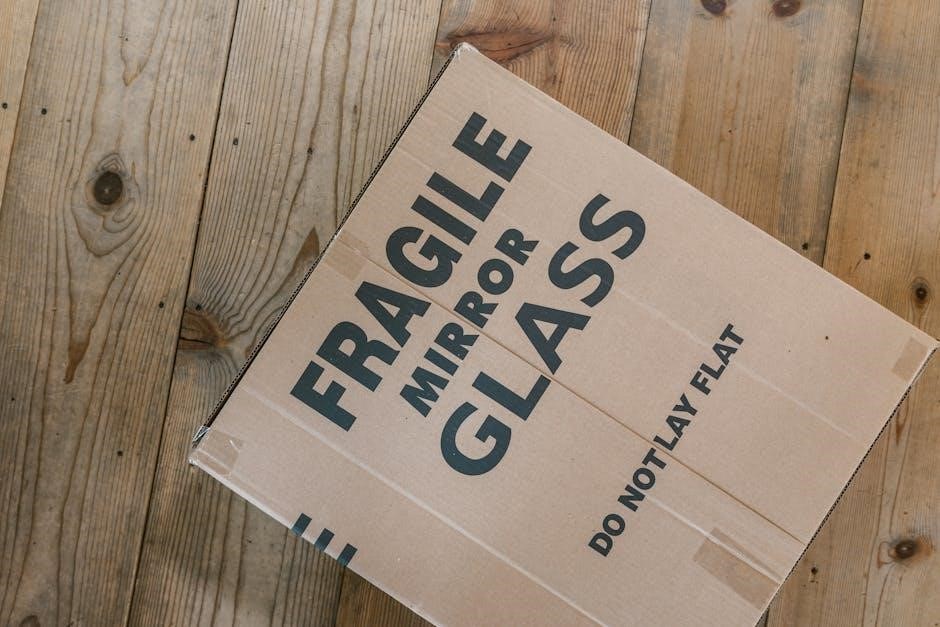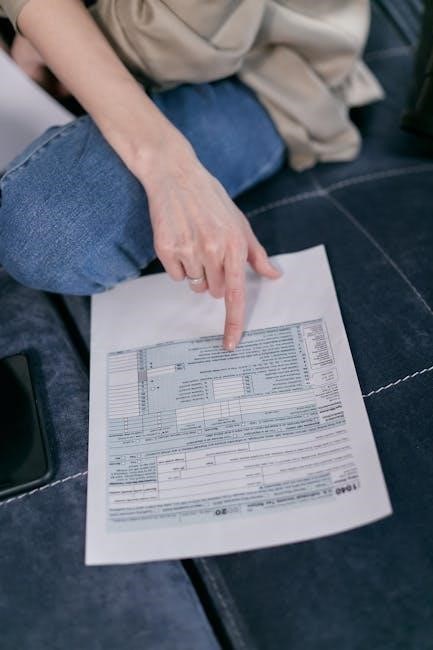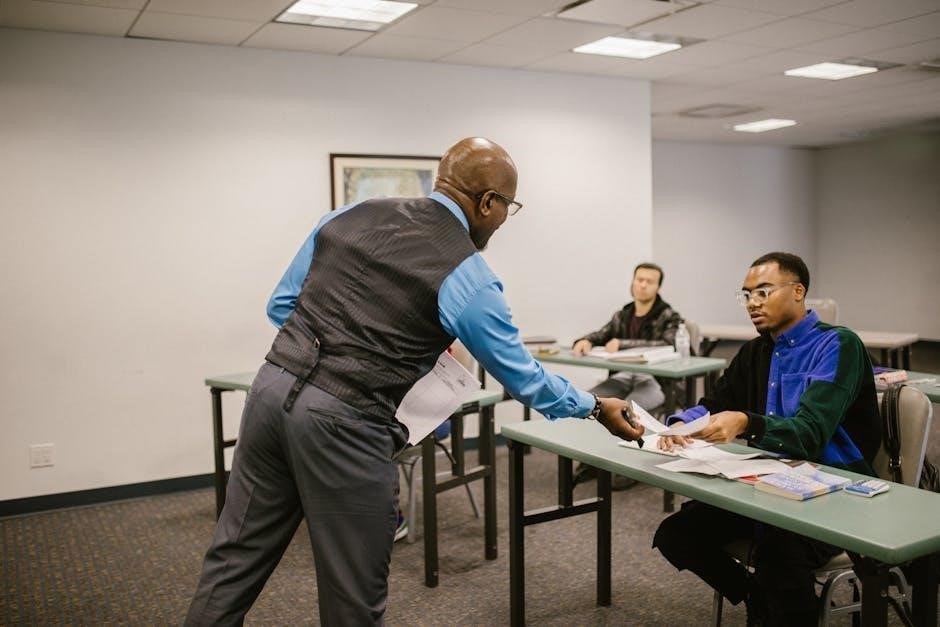JB Weld is a trusted solution for durable repairs, offering exceptional strength and versatility. Known for its robust bonding properties, it seamlessly adheres to various materials, making it a go-to for DIY enthusiasts and professionals alike; With a wide range of products tailored for specific needs, JB Weld provides reliable fixes for metal, wood, and plastic surfaces, ensuring long-lasting results. Its epoxy-based formulas are designed to withstand extreme conditions, making it a versatile tool for countless repair projects. Whether for automotive, household, or industrial use, JB Weld delivers unmatched performance and reliability.
Overview of JB Weld Products
JB Weld offers a diverse range of adhesive and repair products designed for various materials and applications. From the original Cold-Weld epoxy to specialized formulas like SteelStik, KwikWood, and ClearWeld, each product is tailored for specific repair needs. SteelStik is ideal for metal repairs, while KwikWood is perfect for wood surfaces. ClearWeld provides translucent bonding solutions, ensuring invisibility in clear or glass-like materials. These products are known for their durability, versatility, and ease of use, making them suitable for both professional and DIY projects. Their unique formulations ensure strong, long-lasting repairs across different surfaces and conditions.
Importance of Proper Application
Proper application of JB Weld is crucial for achieving the desired strength and durability of the repair. Without following the correct steps, the bond may fail under stress or over time. Surface preparation, mixing ratios, and application techniques must be precise to ensure optimal adhesion and curing. Improper methods can lead to uneven surfaces, weak bonds, or incomplete curing, compromising the repair’s integrity. Adhering to the instructions ensures a professional-grade fix, making the repair last longer and withstand various environmental conditions. Proper application maximizes the product’s potential and guarantees reliable results for any project.

Surface Preparation
Proper surface preparation is essential for effective bonding. Clean the area thoroughly, removing dirt, oil, or grease. Sand the surface to create a rough texture, ensuring better adhesion. Dry the area completely before applying JB Weld to avoid moisture interference. A well-prepared surface guarantees a strong, lasting bond, making your repair more durable and reliable. Neglecting this step can lead to weak adhesion and repair failure. Always ensure the surface is clean, dry, and properly roughened for optimal results.
Cleaning the Surface
Cleaning the surface is a critical step in preparing for JB Weld application. Use a lint-free cloth and a solvent like acetone or lacquer thinner to remove grease, oil, and grime.
Wipe the entire area thoroughly, ensuring no residue remains. Allow the surface to dry completely before proceeding. Avoid using harsh chemicals that might damage the material. A clean surface ensures proper adhesion and a strong bond. Neglecting this step can lead to poor results, so take the time to clean meticulously for optimal repairs.
Sanding and Roughening
Sanding and roughening the surface is essential for ensuring proper adhesion of JB Weld. Start by using medium-grit sandpaper (80-100 grit) to smooth and roughen the area. Sand in one direction to avoid creating scratches. After sanding, use a clean brush or compressed air to remove dust and debris. For metal surfaces, lightly roughen the area to create a better bond. Avoid over-sanding, as it may weaken the material; A properly roughened surface ensures the epoxy adheres securely, leading to a stronger and more durable repair. This step is crucial for achieving professional-grade results.
Drying the Surface
After cleaning and sanding, allow the surface to dry completely before applying JB Weld. Moisture can prevent proper adhesion, so ensure the area is free from dampness. For best results, let the surface air dry for at least 24 hours, depending on humidity and temperature. Use a clean, lint-free cloth to wipe away any remaining residue or moisture. A dry surface is crucial for the epoxy to bond effectively. Avoid rushing this step, as improper drying can lead to weak adhesion and a less durable repair. Ensure the surface is entirely dry before proceeding with the application.

Mixing and Application
Properly mix JB Weld components on a clean surface until uniform. Apply the mixture immediately, spreading evenly with a brush or putty knife. Work quickly, as the epoxy starts setting rapidly, ensuring full coverage and a smooth finish. Avoid overworking the area once applied, as this can disrupt adhesion. Follow specific product instructions for optimal results and durability.
Step-by-Step Mixing Instructions
Begin by gathering JB Weld components and a disposable mixing surface. Ensure both parts are at room temperature. Cut or dispense equal amounts of the resin and hardener. Mix thoroughly using a stir stick or similar tool until the mixture is uniform in color. Avoid overmixing, as this can introduce air bubbles. Use gloves to prevent skin contact. Apply the mixture immediately to the prepared surface, as JB Weld typically starts setting within minutes. Work quickly to spread evenly, ensuring full coverage before the epoxy begins to cure.
Applying the Mixture
Once mixed, apply the JB Weld mixture immediately to the prepared surface using a spatula or brush. Spread evenly, ensuring full coverage across the repair area. Press firmly to eliminate air pockets, especially in uneven surfaces. For larger areas, work in sections to maintain even application. Avoid over-application, as this can lead to excess material oozing out during clamping or curing. Use gloves to handle the mixture and tools to prevent sticking. Allow the product to set undisturbed according to the recommended curing time for optimal results.
Smoothing the Applied Area
After applying the JB Weld mixture, use a putty knife, credit card, or dampened tool to smooth the area. Work quickly, as the mixture begins setting rapidly. Feather the edges to blend seamlessly with the surrounding surface. Avoid over-smoothing, as this can create weak spots. Lightly wipe away excess material using a clean, damp cloth. Ensure the surface is even and free of air bubbles or unevenness. Allow the product to cure undisturbed, following the recommended time, to achieve a strong and durable bond. Proper smoothing enhances both appearance and structural integrity.

Curing and Drying Times
JB Weld typically sets in 4-6 hours and fully cures in 16-24 hours at 70°F. Higher temperatures accelerate curing, while lower temps slow it down. Allow the repair to cure undisturbed for optimal results.
Standard Curing Time
JB Weld typically requires 4-6 hours to set and 16-24 hours to fully cure at 70°F. Optimal curing occurs in a dry environment with consistent temperatures. Allow the product to cure undisturbed during this period to ensure maximum strength and durability. Higher temperatures can accelerate curing, while lower temperatures may extend the process. It’s crucial to avoid exposing the repair to stress or moisture during the curing phase to achieve the best results. Always follow the recommended curing time for a strong and lasting bond.
Factors Affecting Curing Time
Several factors influence JB Weld’s curing time, including temperature, humidity, and thickness of application. Higher temperatures accelerate curing, while lower ones slow it down. Humidity can hinder the process, as moisture interferes with adhesion. Thicker layers take longer to cure than thinner ones. Environmental conditions, such as direct sunlight or drafts, also play a role. Ensuring a stable, dry environment at room temperature (around 70°F) optimizes curing efficiency. Avoiding contamination and maintaining even layers helps achieve consistent results. Proper application practices are key to meeting the expected curing timeline.

Safety Precautions
Always wear protective gloves, safety goggles, and a mask when handling JB Weld. Work in a well-ventilated area to avoid inhaling fumes. Keep away from children and pets. Avoid skin contact, as it may cause irritation. In case of skin exposure, wash thoroughly with soap and water. If accidental ingestion occurs, seek medical attention immediately. Proper ventilation and protective gear ensure a safe application process and minimize health risks associated with epoxy resins.
Handling the Product Safely
When handling JB Weld, always wear protective gloves, safety goggles, and a dust mask to minimize exposure. Work in a well-ventilated area to avoid inhaling epoxy fumes. Avoid direct skin contact, as it may cause irritation or allergic reactions. If skin contact occurs, wash immediately with soap and water. Keep the product away from children and pets. Store JB Weld in a cool, dry place, away from flammable materials. Dispose of unused product and empty containers according to local regulations. Proper handling ensures a safe and effective repair process.
Protective Gear Recommendations
For safe application, wear protective gloves to prevent skin irritation and ensure a secure grip. Safety goggles are essential to protect eyes from accidental splashes. A dust mask can prevent inhalation of epoxy fumes, especially in poorly ventilated areas. Long sleeves and pants can provide additional skin protection. Open windows or use a fan to maintain good airflow. Proper protective gear ensures a safe and hazard-free repair experience, allowing you to work confidently with JB Weld products.
Tools and Materials Needed
Essential tools include gloves, safety goggles, sandpaper, a mixing stick, and a putty knife. Materials needed are the JB Weld product, a clean surface, and clamps.
Essential Tools for Application
Key tools for applying JB Weld include gloves to prevent skin contact, safety goggles for eye protection, and sandpaper to roughen surfaces for better adhesion. A mixing stick or plastic card is necessary for blending the components thoroughly. A putty knife helps in spreading the mixture evenly. Additionally, a clean, dry cloth is useful for wiping excess product. Optional tools like a heat source or clamp can aid in curing or holding pieces in place. Having these tools ready ensures a smooth and effective application process, enhancing the repair’s durability and finish.
Recommended Materials
For optimal results with JB Weld, use a wire brush for surface preparation and a putty knife for applying the mixture. Steel wool or fine-grit sandpaper enhances adhesion. Gloves and safety goggles are essential for protection. A clean, lint-free cloth helps wipe away excess. For detailed work, consider using a small applicator or modeling tool to shape the epoxy. Ensure all materials are compatible with epoxy to avoid interference with the curing process. Having these materials ready ensures a professional-grade repair and minimizes the risk of rework or uneven bonding.

Common Mistakes to Avoid
Common mistakes include improper surface preparation, incorrect mixing ratios, and overapplication. Ensuring a clean, roughened surface and precise mixing is crucial for strong, even bonds and proper curing.
Improper Surface Preparation
Improper surface preparation is a common mistake that can lead to weak bonds and poor adhesion. Failure to clean and sand the surface properly can result in uneven application and reduced durability. Oils, greases, or dirt left on the surface prevent JB Weld from adhering correctly, compromising the repair’s strength. Always ensure the area is thoroughly cleaned with a degreaser and sanded to create a rough texture, which enhances adhesion. Neglecting this step can lead to repairs failing under stress or exposure to environmental factors, making it essential to prioritize proper preparation for long-lasting results.
Incorrect Mixing Ratios
Incorrect mixing ratios are a frequent error that can compromise the effectiveness of JB Weld. Using too much or too little hardener relative to the resin can lead to weak bonds or incomplete curing. Always follow the recommended 1:1 ratio for most JB Weld products, ensuring both components are thoroughly mixed until uniform. Failure to mix properly can result in a soft or brittle finish, reducing the repair’s strength and durability. Properly mixed JB Weld is essential for achieving its renowned strength and long-lasting results, making accurate measurement critical for success.

Troubleshooting Tips
Troubleshooting Tips: Address issues promptly to ensure optimal results. Follow application guidelines and use recommended techniques. Consult detailed guides for specific solutions to ensure repair success.
Fixing Uneven Applications
Fixing uneven applications requires patience and precision. Allow the epoxy to set slightly before smoothing with a tool or sandpaper. For minor imperfections, apply an additional thin layer, feathering the edges for a seamless blend. Use a damp cloth to wipe away excess material. If the area is severely uneven, lightly sand and reapply, ensuring proper adhesion. Avoid overworking, as this can weaken the bond. For a professional finish, apply a final coat and let it cure fully before use. Proper techniques ensure a smooth, even surface that withstands stress and maintains durability.
Dealing with Incomplete Curing
If JB Weld isn’t curing properly, check the temperature and ensure it’s within the recommended range. Thick applications may take longer to cure. If the mixture was contaminated or improperly mixed, it may not harden. Avoid touching or handling the area excessively, as oils from skin can interfere. Allow the product to cure for the full recommended time, typically 24 hours. If still soft, lightly sand the area, clean it, and reapply a new layer. Ensure the surface is dry and free of grease for optimal results. Patience is key to achieving a strong, durable bond.

JB Weld Original Cold-Weld Instructions
JB Weld Original Cold-Weld is a two-part epoxy that bonds strong like steel. Clean the surface, mix the components, and apply. Allow 24 hours to cure for maximum strength.
Step-by-Step Application Guide
Clean and prepare the surface to ensure proper bonding. Mix JB Weld Original Cold-Weld components thoroughly on a disposable surface. Apply the mixture evenly to the damaged area within 20 minutes. Use a tool or spreader to smooth the applied epoxy. Allow the repair to cure at room temperature for 24 hours for maximum strength. Avoid using the repaired item during the curing process. Once cured, the bond will be strong and durable, suitable for various applications, including metal repairs.
Specific Use Cases
JB Weld is ideal for repairing cracks in metal pipes, bonding engine components, and restoring damaged machinery parts. It’s also effective for fixing household items like leaky tanks or broken appliances. For automotive use, it can seal exhaust systems or repair metal frames. In marine applications, it’s great for underwater repairs due to its waterproof properties. Additionally, it works well for bonding plastics, ceramics, and wood, making it a versatile solution for various DIY projects and industrial needs.
JB Weld SteelStik Instructions
Twist the ends to activate the epoxy, then apply directly to the surface. SteelStik bonds metal, offering high tensile strength for durable repairs in minutes.
Activation and Application
Activate SteelStik by twisting the ends to break the inner seal, mixing the epoxy components. Apply directly to clean, dry surfaces, pressing firmly for optimal adhesion. Suitable for metal, plastic, and wood, it forms a strong bond within minutes. For best results, work in a well-ventilated area and avoid over-application. Allow 5-10 minutes for initial set and 24 hours for full cure. SteelStik is ideal for repairs requiring high tensile strength and durability, making it a reliable choice for automotive, industrial, and household fixes.
Best Practices for SteelStik
For optimal results, ensure surfaces are clean, dry, and free of grease or oils. Use gloves to prevent skin contact. Apply SteelStik in thin layers, allowing each layer to cure before adding more. Avoid mixing with other adhesives and use in temperatures above 40°F for proper curing. SteelStik excels in high-stress applications, making it perfect for metal repairs. Sanding cured areas ensures smooth finishes. Proper storage in cool, dry conditions prolongs shelf life. Follow all safety precautions and instructions for professional-grade repairs.

JB Weld KwikWood Instructions
JB Weld KwikWood is a fast-setting, wood-repair epoxy. Mix equal parts, apply to damaged areas, and let cure for 15-20 minutes. Sand smooth after curing for a seamless finish.
Repairing Wood Surfaces
JB Weld KwikWood is ideal for repairing damaged wood surfaces. Mix the putty according to instructions, apply to the affected area, and let it cure for 15-20 minutes. Once cured, sand the area to achieve a smooth finish. This product is perfect for fixing rotten wood, filling gaps, or restoring wooden structures. Its quick-setting formula ensures minimal downtime, making it suitable for both indoor and outdoor projects. For best results, ensure the surface is clean and dry before application. KwikWood adheres strongly to wood, providing a durable and long-lasting repair.
Detailed Application Steps
For optimal results, mix JB Weld components thoroughly on a clean surface. Apply the mixture evenly to the prepared area, ensuring full coverage. Allow it to set for 20-25 minutes before handling. Full cure occurs in 60 minutes, reaching maximum strength. Sand any excess material after curing for a smooth finish. Always follow specific product instructions for best outcomes. Proper preparation and application ensure durable, long-lasting repairs. This step-by-step process guarantees professional-quality results for various materials and projects.
JB Weld ClearWeld Instructions
JB Weld ClearWeld is a translucent epoxy perfect for bonding clear surfaces. Apply thin layers, ensuring surfaces are clean and dry. Mix equal parts resin and hardener, then spread evenly. Allow 20-25 minutes to set and 1 hour to fully cure. Ideal for glass, acrylic, and clear plastics, providing invisible repairs. Follow instructions carefully for optimal clarity and strength.
Translucent Bonding Solutions
JB Weld ClearWeld offers a unique translucent bonding solution, ideal for applications requiring clarity. It is perfect for repairing glass, acrylic, and clear plastics without marring the appearance. The epoxy mixture creates a strong, invisible bond, making it suitable for delicate surfaces. Proper preparation ensures a seamless finish. Apply thin layers to avoid muddying the transparency. Allow 20-25 minutes to set and 1 hour to fully cure. ClearWeld is a versatile choice for maintaining the aesthetic integrity of clear materials while providing durable strength and resistance to stress.
Application Tips
For optimal results, apply JB Weld in small, manageable batches to avoid wasting material. Use a credit card or similar tool to spread the mixture evenly across the surface. Avoid over-application, as this can lead to uneven drying. Gently press the mixture into cracks or gaps to ensure full penetration. Smooth the edges with a damp cloth to create a seamless finish; Allow the product to cure in a well-ventilated area, away from direct sunlight. For best adhesion, ensure the surface is clean and free of oils or greases. Clamping can help maintain alignment during curing.

Advanced Techniques
Layering JB Weld for enhanced strength and using it on specific materials like metal or wood can achieve professional-grade repairs. Follow detailed application steps for best results.
Layering for Strength
Layering JB Weld is an advanced technique to enhance repair strength and durability. Apply thin, even layers, allowing each to cure before adding the next. This method prevents cracking and ensures a strong, even finish. Proper surface preparation is essential for optimal adhesion. Layering is particularly effective for load-bearing repairs, providing maximum structural integrity. By building up layers gradually, you achieve a professional-grade bond that withstands heavy use. This technique is ideal for critical applications where strength and longevity are paramount, ensuring your repairs remain durable and reliable over time.
Using JB Weld for Specific Materials
JB Weld’s versatility shines when applied to specific materials. For metal repairs, JB Weld Original Cold-Weld is ideal, creating a steel-strong bond. When working with wood, JB Weld KwikWood is perfect for repairing damaged or rotten areas. For plastic surfaces, JB Weld PlasticWeld ensures a durable, flexible repair. Each product is formulated to match the material’s properties, providing a seamless fix. By selecting the right JB Weld variant for your material, you ensure a strong, lasting repair tailored to the job at hand, whether it’s metal, wood, or plastic.
Frequently Asked Questions (FAQs)
Common questions include ideal curing times, proper mixing ratios, and safety tips to ensure effective and safe JB Weld applications.
General Usage Questions
Users often ask about the best surfaces for JB Weld, proper mixing techniques, and ideal curing conditions. Common inquiries include how long it takes to set, suitable materials for bonding, and safety precautions. Many wonder if it can be used on plastic or wood, while others seek advice on avoiding uneven applications or ensuring a strong bond. Additionally, questions about temperature resistance, drying times, and troubleshooting are frequent, along with queries about the difference between various JB Weld products and their specific uses.
Product-Specific Queries
Common questions focus on the differences between JB Weld products, such as Original Cold-Weld, SteelStik, KwikWood, and ClearWeld. Users often ask about the best product for specific materials like metal, wood, or plastic. Queries also include ideal applications, such as high-temperature resistance or waterproofing. Many seek clarification on curing times and whether the product can be sanded or painted after drying. Additionally, questions arise about compatibility with certain surfaces and tips for achieving a smooth, even bond. Understanding these specifics helps users choose the right product for their repair needs.
